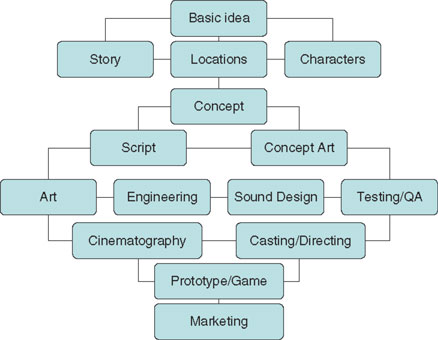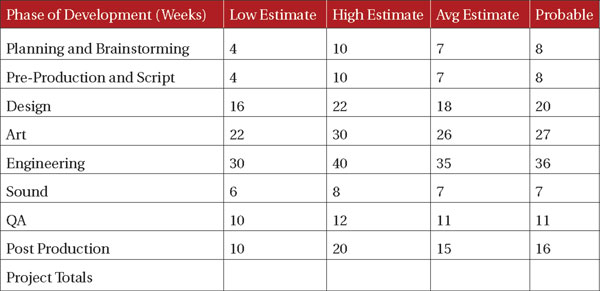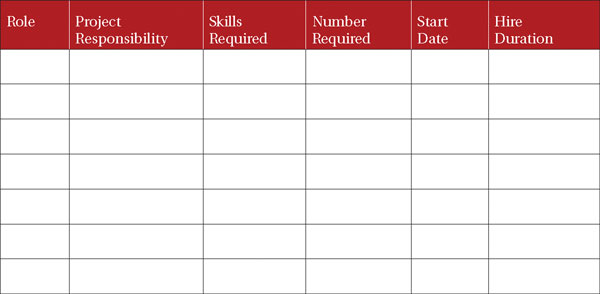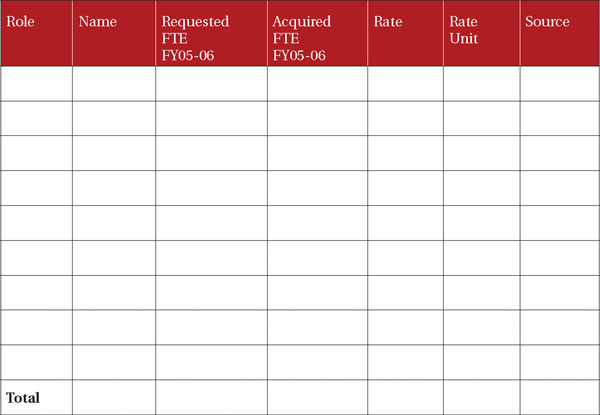Appendix A: Extras
A lot of various reports, forms, and spreadsheets are used dur ing the production of a video game. This appendix provides a col lection of some of the more important paperwork, as well as the forms that are most often associated with the film industry—forms you will use during production of your cinematic game. Keep in mind, though, that any legal forms should be looked over by a local attorney before you use them on a project.
Your basic design document/concept is like a presentation. It should include a few strategic photos and the like to support the written materials. Make sure to include all key details within the game that will make it sell and unique.
Game Title
Be creative when coming up with your game title. It is one of your first marketing tools and should define the type of game you are creating, as well as generate excitement.
Table of Contents
Here you will list the sections of your game concept/design. Fine tune the major points within the sections with a numerical system like the table of contents for this book: 1.1, 1.2, 1.3, etc.
1. Overview
This section should lay out what the game is basically about. Include details regarding the story, the protagonist (and other key characters), key features, and the genre the game will be marketed under. Also be sure to note anything that will differentiate your game from the field and what platforms the game will be developed for.
Here you will breakdown how the game actually works; is it a race against time or against opponents? What different abilities, levels, etc. are involved in the game? What’s the scoring system? How many different skill levels will there be? Will there be online play? Lay out the who, what, where, when, and how of the game as well.
3. Interface and Control
This is the section where you lay out the main menus and what the controller will do. Also, any features contained within the game that are outside of the actual gameplay, such as maps, weapon selection screens, and so on should be laid out in this section. If you are utilizing a type of controller other than the standardD-pad type for most consoles (or keyboard for PC), be sure to mention this as well.
4. Graphics
Here you will describe the various artistic elements of the game. Will it be photorealistic or cartoon-style? What different models, environments, and props will be featured in the game? Also lay out the lighting and camera style of the game.
6. Artificial Intelligence
How will the enemies react in the game? Are they passive or aggressive? What about game-controlled teammates? What will be the intelligence levels of all NPC’s within the environment?
7. Environment
Talk about the various locales/levels of the game, and any environmental elements that will affect gameplay. Does the game terrain vary? What about weather? How does it affect the characters or missions?
8. Editors
How much customization is involved with the game? How is it done? If you are planning add-on packs or maps, mention these here.
While this is not an all-inclusive design document, it will cover most game types or genres. If you are going to make an arcade/ casual game, you won’t need most of these sections—modify the document to fit the needs of your game. You can also add other optional items such as information regarding the actual game studio (like your mission statement).

Name of Project |
||
Platforms: |
Xbox360 |
PS3 |
Release: |
Spring |
2009 |


This spreadsheet would breakdown all the personnel per department—including art, programming/engineering, QA, sound, and so on—and breakdown their pay per position for the project. You would also list all software, including engine, and include those costs as well. Finally, you would breakdown all the hardware that must be purchased, any rentals that must be done (to include external studios for sound or mocap), and all the expenses associated with running the studio.
Once you have included all this information, per department this spreadsheet will be about four-five pages long!
This section will basically list every position you need filled for development. Simply plug in the title, responsibility, any specific skills that must be fulfilled by this person, and the duration of employment.

This section is where you put the actual people hired to fill each position (later becomes an org chart), date of hire, expected termination of contract, their rate of pay, unit of pay, and where they were hired from.

Scene # |
Scene name |
Breakdown page # |
Description |
Int. or Ext. |
|
Script page |
Day or night |
CAST |
EXTRAS |
EXTRAS/ATMOSPHERE |
PROPS |
WARDROBE |
MAKE-UP/HAIR |
VEHICLES |
SPECIAL EQUIPMENT |
SOUND FX/MUSIC |
A character breakdown basically lists all the information regarding a specific character within your game. It will be used by the actors you will cast to understand the motivation and style of the character, as well as make sure the director keeps the actors on point. It is also useful for screenwriters as a reference when making decisions in the story regarding that character. You would make a character breakdown for all major characters in the game with as much detail as is deemed necessary. Here are the typical areas you would fill in for each character:
Character Function. Is he/she the protagonist, antagonist, or a supporting role?
Character’s Major Emotions. What is the general mood of the character?
Character’s Background. This can include birthplace, context of appearance in the script, and general motivation.
Character’s Objectives. Does the character live or die? What’s the goal?
Script Notes. List the places in the script that the character appears and the significance of these scenes.
Character’s Dialogue. If possible, list the dialogue for that character; if it is a major character, you would attach the entire script.
Remember that your writer will have the major role in determining the information listed above and that you should heed their suggestions. Character breakdowns, when coupled with the script, are a great tool for getting top notch performances out of your actors and screenwriters.
